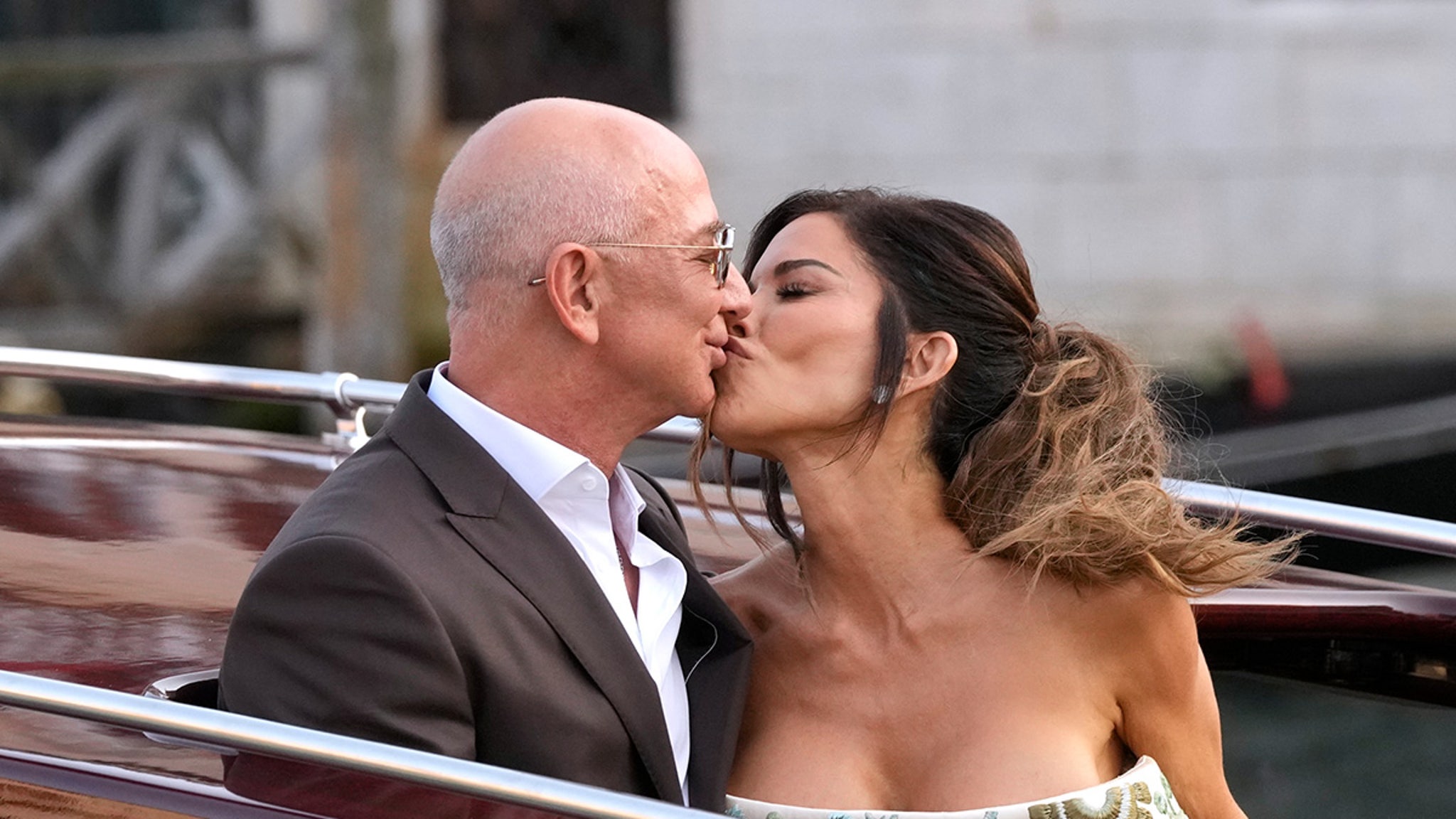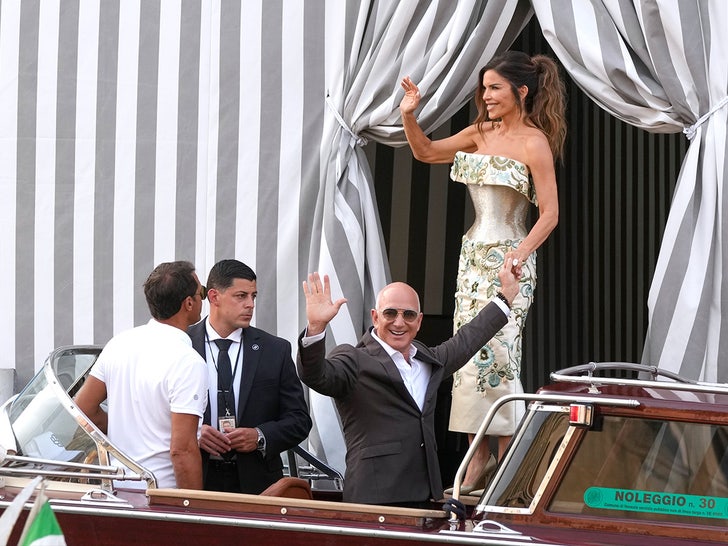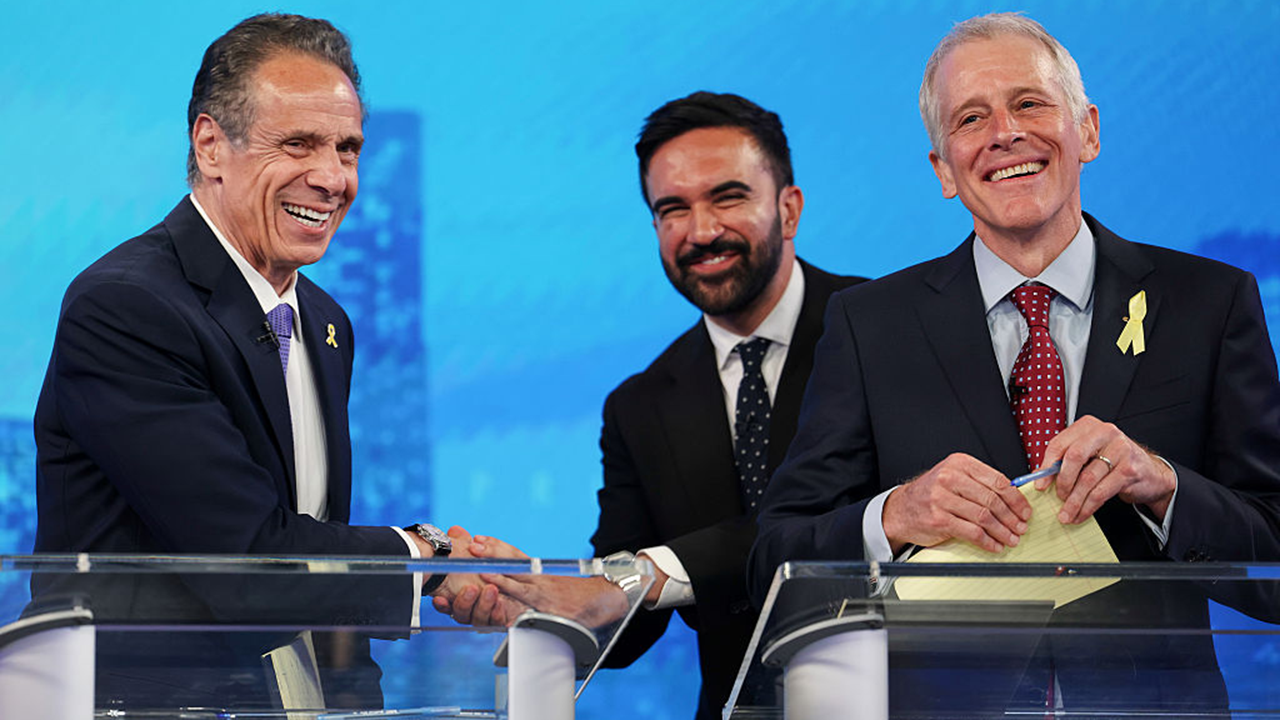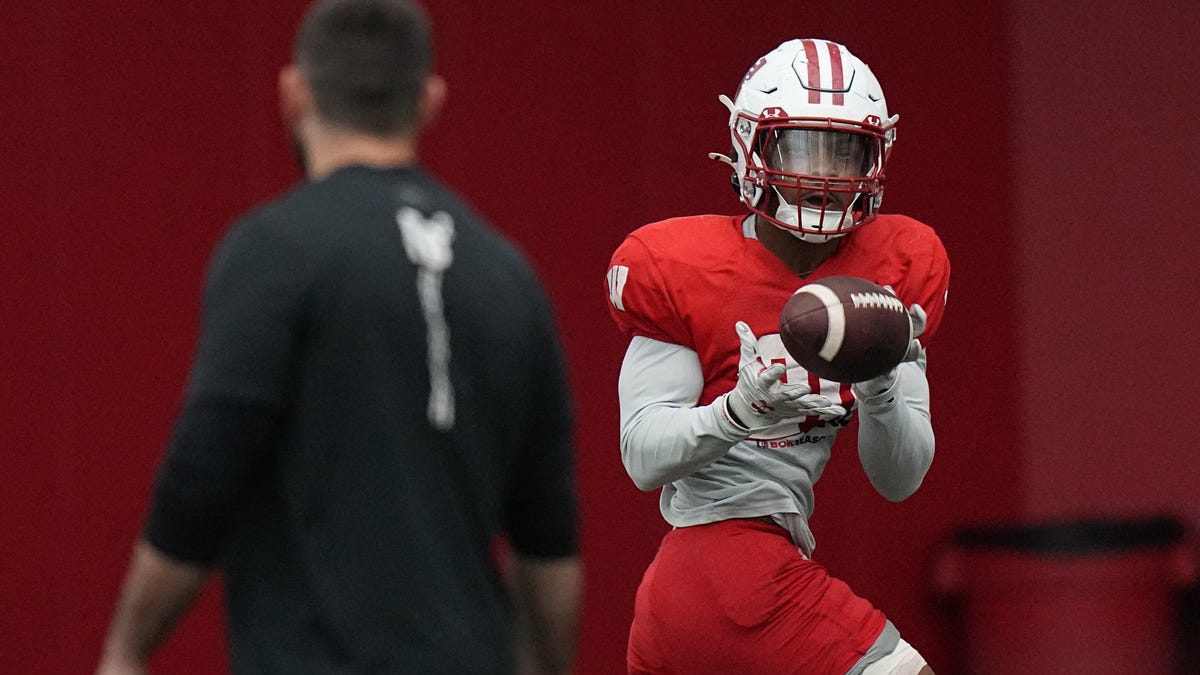Lifestyle
How to have the best Sunday in L.A., according to Felix Mallard

What Felix Mallard has grown to appreciate about living in L.A. is that there’s a pocket of town to match every vibe — even if that vibe is “Aussie,” which his proudly is, having moved from Melbourne seven years ago.
“There are a lot of places that remind me of home,” says the 27-year-old actor, who plays tough-shelled Marcus in Netflix’s “Ginny & Georgia,” which returns for its third season next week. “The coastal cities and certainly some parts of Silver Lake and Echo Park feel very Melbourne. They feel very hipster. I mean, that word has changed so much — I don’t know if bohemian is the right word either. But there’s a sense of wanting to engage with good food, good coffee and good art. That kind of thing is very important to people from Melbourne.”

In Sunday Funday, L.A. people give us a play-by-play of their ideal Sunday around town. Find ideas and inspiration on where to go, what to eat and how to enjoy life on the weekends.
As he carves his own space in Los Angeles, Mallard has been captivating Gen Z audiences with his nuanced roles, ones that tend to resonate with young men amid all of the distinct pressures they face. Last year, he starred in the romantic drama “Turtles All the Way Down,” the film adaptation of John Green’s young adult novel that explores the complexities of obsessive-compulsive disorder. He’s now set to headline “Nest,” a movie about a young family whose home is invaded by deadly arachnids. (“It’s a quiet meditation on masculinity and being a father, wrapped up in a really fun spider horror movie,” he explains. “A real one-two punch.”)
For Mallard, a perfect Sunday in L.A. involves surfing (a must), playing music loudly (he knows his way around the guitar, bass, piano and drums) and trekking from West L.A. to the Eastside in the name of adventure. Here’s a play by play.
This interview has been lightly edited for length and clarity.

5:30 a.m.: Chase the waves
I’d get up early and have a surf. The funny thing with surfing in L.A. is that you have to go where the waves are good. So it could be anywhere — Manhattan Beach, Hermosa Beach, Huntington Beach, Malibu or Ventura. You’ve got to check the Surfline app and kind of know the seasons as well, like how winter brings north swells and summer brings south swells. But it’s a guessing game. You kind of throw a dart and follow it, you know? There’s a nice crew of Aussies, Kiwis and Americans. We all try and surf together, which is really sweet.

8 a.m.: Post-surf burritos
Now I’ll probably be in a raggedy flannel top and some track pants and some Birkenstocks. Really just kind of half asleep. But it’s mandatory after a surf to get a breakfast burrito. There’s a really, really good place in Hermosa Beach called Brother’s Burritos. They don’t do the typical kind of massive breakfast burrito. Theirs come in two little bite-size burritos, which is perfect for breakfast, you know? And then there’s another place in West L.A. called Sachi.LA that’s just off the Culver loop. It’s a really cool, funky little coffee shop and cafe with a little record store next door — the perfect kind of vibe after having a surf and being in nature all morning. I really try to enjoy the peace that comes after that.

9:30 a.m.: Catch up on shows
I’m going home and catching up on the week’s shows. Right now, I’m really deep into “Hacks” — obsessed with it. I feel like I came to it quite late and I’ve had to make up for lost time. And I’m really, really loving “Everybody’s Live With John Mulaney,” and “Last Week Tonight With John Oliver.” I feel like if you’re going to check in with the news these days, it’s got to be in a format that’s digestible. I think John Oliver has a really great way of doing that, presenting the outrage and the absurdity in a fun context.
Noon: Try to find the joy of cooking
I’ve always found it such a challenge to see cooking as the expression of love that I know it is — I just haven’t had the inspiration. But Jamie Oliver’s books have really helped me because he explains recipes in a way that teach you the fundamentals. He’s got this cookbook, “One-Pan Wonders,” with an herb-y chicken tray bake that’s really simple. You can put the vegetables at the bottom of the tray — and a lot of rosemary and a lot of lemon — and put the chicken on the bars above the tray, so that when it cooks, the chicken fat drops into the vegetables and creates this really lovely flavor in the veggies. And then you finish it off with some lemon and olive oil. So that’s the one I think I can do. But if anyone has seen that recipe, they’ll know it’s the easiest one in the book, so I’m not trying to brag here.

1 p.m.: Get lost in the music
It’s always a struggle to get up off the couch, but once there’s been some food, I’m off to play some music. There was this beautiful, really fun, cheap, grungy rehearsal studio in Culver City called Exposition Studios. It would be, like, $25 or $30 an hour, and you could rent instruments and rent a room and just play as loud and as long as you want. It’s not there anymore, but there are a few other places like that around town. I’ve gone to Pirate Studios in West Adams a couple times, and just anywhere I can play some music, really, really loud.
I’ve got an EP of songs that I’m working my way through. It’s very grungy, very emotion-based. It’s probably quite angsty. There’s a lot of anger in there, and then I think maybe a lot of sadness. It’s touching on a lot of the uglier sides of our psyche that we all have.
4 p.m.: Car entertainment
Now we start preparing the journey east. Because it’s L.A., you can’t pretend that you’re not going to spend some part of your day in traffic. So a podcast is a must. I’ll be listening to Louis Theroux. I just love how he asks questions, how he kind of gives a space for his guests to either showcase who they are or maybe unknowingly reveal parts of themselves they may not even intend to. How he holds the space for that is quite impressive, and it’s a good distraction while you’re driving.

5 p.m.: Fuel up with burgers
We’re going to Burgerlords. They do a really simple menu. You can get a smashburger, I think a vegan burger, and something else, and they’ve got a really nice selection of craft beers. And it’s kind of like a redone version of a ‘50s diner inside.

7 p.m.: Let loose at a punk show
From there, we’ll go to Zebulon. I love it. I don’t see too many venues with an indoor-outdoor kind of space. They have a big garden, so you can go and take a break outside and then come back in and enjoy that change of pace. It’s one of my favorite spots in L.A. to go and watch music, for sure.
The last time I went, we saw the Spits. They’re, you know, really proper punks. And then another time, we saw a band called Spy, and they were supported by Fentanyl, Blood Stained Concrete and Yard, which is a Polish hardcore band. So any time we’re out there, it’s usually for a bit more of a hardcore kind of scene. And they’re the most fun gigs to go to. Everyone’s there to release some tension, some energy. The fans are always super, super, super die-hard fans.
Midnight: Straight to bed
I’ll make the trek home and tuck into bed. That’s usually about midnight. I’d like to say it’s earlier and that I’m, like, healthy, but I’m not.

Lifestyle
Asked to flag 'negative' National Park content, visitors gave their own 2 cents instead

Signs like this one in the Presidio of San Francisco, part of the Golden Gate National Recreation Area, have been going up around the country in response to President Trump’s executive order titled “Restoring Truth and Sanity to American History.”
Chloe Veltman/NPR
hide caption
toggle caption
Chloe Veltman/NPR
Signs installed earlier this month in national parks across the country asking visitors to share feedback on “any signs or other information that are negative about past or living Americans” are eliciting all sorts of reactions. But comments viewed by NPR don’t provide the requested feedback.
Visitors to the Presidio of San Francisco, a National Historic Landmark and former military garrison with a complex history seemed unimpressed by the small black-and-white sign placed on a coffee table at roughly shin-level near the Presidio’s welcome center on a recent morning.

“The point of going to a park is to enjoy nature, not to whistleblow something that casts the American people in a bad light,” said Evan Sutterfield, a San Francisco school teacher enjoying a day out on his summer break.
“I think you need to tell the whole story,” said Russ Harwell, visiting from Charlotte, N.C. “If you’re gonna write it out of history, then you’re doomed to repeat it.”
Linda Mosinian from Milwaukee, Wis. added: “I think this is a waste of time.”
‘Restoring Truth and Sanity to American History’
The signs, which invite people to send comments anonymously using a QR code, phone number, email or web address, have appeared in response to an executive order President Trump issued in March titled “Restoring Truth and Sanity to American History.” It specifically calls for the removal of content from monuments and properties within the Department of the Interior that “inappropriately disparages Americans past or living.”
In a statement to NPR, the Department of the Interior said: “The effort ensures public lands reflect an accurate portrayal of American history and heritage.”

NPR reviewed dozens of comments submitted from June 4 to 12 regarding signs placed in parks across the country. According to The Coalition to Protect America’s Parks, a multi-page PDF containing these comments was leaked by a national park employee who took screenshots of the comments pages on their computer and then shared the PDF with parks advocacy groups.
None of the submitted comments suggest the parks need to change their depictions of people or history.
Some are supportive. “The park rangers and volunteers go above and beyond to tell the full American story,” stated a comment about Catoctin Mountain Park in Maryland.
Others say national parks should reflect even more of the country’s difficult history. “Need more history on how black and indigenous people have been exploited,” one comment stated.
Differing opinions
That’s not to say all visitors are happy about the historical information shared at parks.
Department of the Interior spokesperson J. Elizabeth Peace said after Trump issued the executive order — but before the signs went up — her department had already started receiving feedback from national park visitors via the department’s email address.
Peace said one example relates to Capitol Reef National Park in Utah, where a visitor reported that a souvenir postcard mislabeled a nearby landmark and appeared to copy text from Wikipedia without attribution.
Another came from a visitor concerned about a video on the website of the Washington Monument in Washington, D.C., which inaccurately stated George Washington ended his inaugural oath with a phrase historians widely agree lacks definitive sourcing.

The phrase in question was “So help me God.”
Neither of these comments related to Trump’s executive order about content that, “inappropriately disparages Americans past or living.” But Peace said they were nevertheless useful.
“Both examples provided were reviewed by the National Park Service and appropriate corrective or clarifying action was taken,” Peace said. “These examples underscore the value of public feedback in helping us maintain historical accuracy across our sites and materials.”
Accuracy challenges
Accuracy isn’t a given, because feedback can be submitted through a general website or email address accessible from anywhere in the world.
“What would stop somebody with an agenda from posting fake comments?” said Clara Wooden, a member of the board of The Coalition to Protect America’s National Parks. “People at both ends of the ideological spectrum can game the system without even setting foot in a national park.”
In response to these concerns, the Department of the Interior’s Peace told NPR comments are individually reviewed before being routed to appropriate subject matter experts for further evaluation and validation. “This manual review process helps ensure that the feedback we work with is both relevant and credible,” she said.
Lifestyle
Jeff Bezos, Lauren Sanchez Kiss & Wave En Route to Wedding Rehearsal

Jeff Bezos, Lauren Sanchez
Smoochin’ Like the World Is Watching!!!💋
Rehearsal, Here We Come!!!
Published
Jeff Bezos and Lauren Sanchez are kissing like there’s no tomorrow — playing lovestruck teens while cruising to their fairy tale wedding rehearsal in Venice … while all the world watches.
The PDA was full throttle — the couple were smooching and waving like royalty from their water taxi Thursday, with Jeff grinning ear to ear and Lauren beaming just as hard … looking surprisingly comfortable for someone dripping in extreme, skintight couture

Lauren was serving bombshell — rocking a sculpted off-the-shoulder midi with a metallic bodysuit that snatched her waist to perfection. If there was a pre-wedding health kick, it definitely did the job!

Jeff was giving full billionaire swagger — wearing a sleek suit, crisp wedding shirt, and looking every bit the mega-rich groom-to-be as they made their grand glide through Venice.
Of course, the A-list crew — including Orlando Bloom, Tom Brady and more — were also hopping on water taxis, ready to kick off the ultra-glam wedding weekend.
Our sources tell us after the wedding, the guests will be whisked off to a mystery island near Venice. Clearly, this is a one heck of a Bezos-level blowout!
Lifestyle
In a first-of-its-kind decision, an AI company wins a copyright infringement lawsuit brought by authors

The Anthropic website and mobile phone app are shown in this photo on July 5, 2024. A judge ruled in the AI company’s favor in a copyright infringement case brought last year by a group of authors.
Richard Drew/AP
hide caption
toggle caption
Richard Drew/AP
AI companies could have the legal right to train their large language models on copyrighted works — as long as they obtain copies of those works legally.
That’s the upshot of a first-of-its-kind ruling by a federal judge in San Francisco on Monday in an ongoing copyright infringement case that pits a group of authors against a major AI company.
The ruling is significant because it represents the first substantive decision on how fair use applies to generative AI systems.
Fair use doctrine enables copyrighted works to be used by third parties without the copyright holder’s consent in some circumstances such as illustrating a point in a news article. Claims of fair use are commonly invoked by AI companies trying to make the case for the use of copyrighted works to train their generative AI models. But authors and other creative industry plaintiffs have been pushing back with a slew of lawsuits.
Authors take on Anthropic
In their 2024 class action lawsuit, authors Andrea Bartz, Charles Graeber and Kirk Wallace Johnson alleged Anthropic AI used the contents of millions of digitized copyrighted books to train the large language models behind their chatbot, Claude, including at least two works by each plaintiff. The company also bought some hard copy books and scanned them before ingesting them into its model.
“Rather than obtaining permission and paying a fair price for the creations it exploits, Anthropic pirated them,” the authors’ complaint states.
In Monday’s order, Senior U.S. District Judge William Alsup supported Anthropic’s argument, stating the company’s use of books by the plaintiffs to train their AI model was acceptable.
“The training use was a fair use,” he wrote. “The use of the books at issue to train Claude and its precursors was exceedingly transformative.”
The judge said the digitization of the books purchased in print form by Anthropic could also be considered fair use, “because all Anthropic did was replace the print copies it had purchased for its central library with more convenient space-saving and searchable digital copies for its central library — without adding new copies, creating new works, or redistributing existing copies.”
However, Alsup also acknowledged that not all books were paid for. He wrote Anthropic “downloaded for free millions of copyrighted books in digital form from pirate sites on the internet” as part of its effort “to amass a central library of ‘all the books in the world’ to retain ‘forever,.’”
Alsup did not approve of Anthropic’s view “that the pirated library copies must be treated as training copies,” and is allowing the authors’ piracy complaint to proceed to trial.
“We will have a trial on the pirated copies used to create Anthropic’s central library and the resulting damages, actual or statutory (including for willfulness),” Alsup stated.
Bifurcated responses
Alsup’s bifurcated decision led to similarly divided responses from those involved in the case and industry stakeholders.
In a statement to NPR, Anthropic praised the judge’s recognition that using works to train large language models was “transformative — spectacularly so.” The company added: “Consistent with copyright’s purpose in enabling creativity and fostering scientific progress, Anthropic’s large language models are trained upon works not to race ahead and replicate or supplant them, but to turn a hard corner and create something different.”
However, Anthropic also said it disagrees with the court’s decision to proceed with a trial.
“We believe it’s clear that we acquired books for one purpose only — building large language models — and the court clearly held that use was fair,” the company stated.
A member of the plaintiffs’ legal team declined to speak publicly about the decision.
The Authors’ Guild, a major professional writers’ advocacy group, did share a statement: “We disagree with the decision that using pirated or scanned books for training large language models is fair use,” the statement said.
In an interview with NPR, the guild’s CEO, Mary Rasenberger, added that authors need not be too concerned with the ruling.
”The impact of this decision for book authors is actually quite good,” Rasenberger said. “The judge understood the outrageous piracy. And that comes with statutory damages for intentional copyright infringement, which are quite high per book.”
According to the Copyright Alliance, U.S. copyright law states willful copyright infringement can lead to statutory damages of up to $150,000 per infringed work. The ruling states Anthropic pirated more than 7 million copies of books. So the damages resulting from the upcoming trial could be huge.
The part of the case focused on Anthropic’s liability for using pirated works is scheduled to go to trial in December.
Other cases and a new ruling
Similar lawsuits have been brought by other prominent authors. Ta-Nehisi Coates, Michael Chabon, Junot Díaz and the comedian Sarah Silverman are involved in ongoing cases against AI players.
On Wednesday, U.S. District Judge Vince Chhabria ruled in favor of Meta in one of those cases. A copyright infringement lawsuit was brought by 13 authors including Richard Kadrey and Silverman. They sued Meta for allegedly using pirated copies of their novels to train LLaMA. Meta claimed fair use and won because the authors failed to present evidence that Meta’s use of their books impacted the market for their original work. However, the judge said the ruling applies only to the specific works included in the lawsuit and that in future cases, authors making similar claims could win if they make a stronger case.
“ These rulings are going to help tech companies and copyright holders to see where judges and courts are likely to go in the future,” said Ray Seilie, a lawyer based in Los Angeles with the firm Kinsella Holley Iser Kump Steinsapir, who focuses on AI and creativity. He is not involved with this particular case.
“ I think they can be seen as a victory for the AI community writ large because they create a precedent suggesting that AI companies can use legally-obtained material to train their models,” Seilie said.
But he said this doesn’t mean AI companies can immediately go out and scan whatever books they buy with impunity, since the rulings are likely to be appealed and the cases could potentially wind up before the Supreme Court.
“ Everything could change,” Seilie said.
-

 Arizona1 week ago
Arizona1 week agoSuspect in Arizona Rangers' death killed by Missouri troopers
-

 Business7 days ago
Business7 days agoDriverless disruption: Tech titans gird for robotaxi wars with new factory and territories
-

 News1 week ago
News1 week agoDog shot during Minnesota lawmaker's murder put down days after attack
-

 Business1 week ago
Business1 week agoProtesters are chasing federal agents out of L.A. County hotels: ‘A small victory’
-

 Politics1 week ago
Politics1 week agoCuomo team denies AOC’s claim he’s using NYC mayor run as a springboard to the White House
-

 Technology1 week ago
Technology1 week agoSenate passes GENIUS stablecoin bill in a win for the crypto industry
-

 Technology1 week ago
Technology1 week agoOpenAI awarded $200 million US defense contract
-

 News1 week ago
News1 week agoVideo: Inside Trump’s Shifting Stance on Iran















